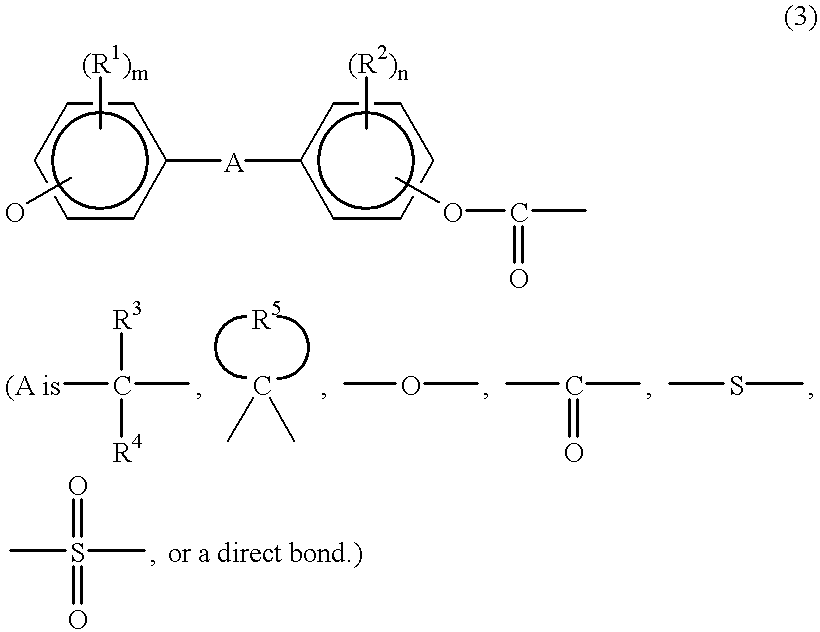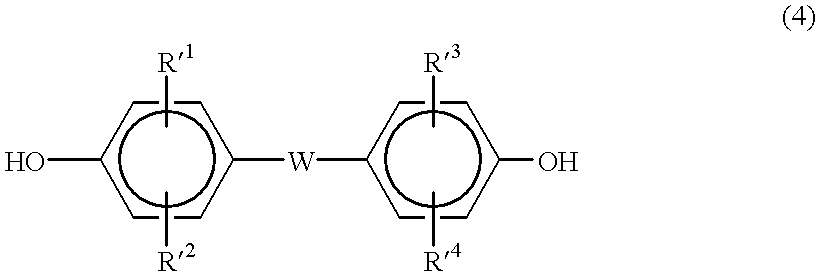Stabilized aromatic polycarbonate
a technology of aromatic polycarbonate and stabilized polycarbonate, which is applied in the field of stabilized aromatic polycarbonate, can solve the problems of short-term stability, lowering of molecular weight, and black foreign material generation,
- Summary
- Abstract
- Description
- Claims
- Application Information
AI Technical Summary
Problems solved by technology
Method used
Image
Examples
example
Production of Polymer for Examples 1 to 8 (A-1 to 8)
A reactor provided with a starting apparatus, a distillation column and an evacuation apparatus was charged with 228 parts by weight of BPA, a prescribed amount of DPC, prescribed amounts of prescribed kinds of transesterification catalyst and tetramethylammonium hyroxide (9.1.times.10.sup.-3 parts by weight; 100 .mu. chemical equivalent / 1 mol BPA), the atmosphere was substituted with nitrogen and the content was dissolved at 140.degree. C. The content was stirred for 30 minutes, heated to 180.degree. C. and made to react for 30 minutes under the inner pressure of 100 mmHg, and the produced phenol was distilled out. Then the temperature in the reactor was raised to 200.degree. C. while the pressure was gradually decreased, and the reaction was continued for 30 minutes under a pressure of 50 mmHg, distilling out the produced phenol. The system was further gradually heated and evacuated to 220.degree. C. and 30 mmHg, and the reaction...
PUM
| Property | Measurement | Unit |
|---|---|---|
| Fraction | aaaaa | aaaaa |
| Substance count | aaaaa | aaaaa |
| Nanoscale particle size | aaaaa | aaaaa |
Abstract
Description
Claims
Application Information
 Login to View More
Login to View More - R&D
- Intellectual Property
- Life Sciences
- Materials
- Tech Scout
- Unparalleled Data Quality
- Higher Quality Content
- 60% Fewer Hallucinations
Browse by: Latest US Patents, China's latest patents, Technical Efficacy Thesaurus, Application Domain, Technology Topic, Popular Technical Reports.
© 2025 PatSnap. All rights reserved.Legal|Privacy policy|Modern Slavery Act Transparency Statement|Sitemap|About US| Contact US: help@patsnap.com



